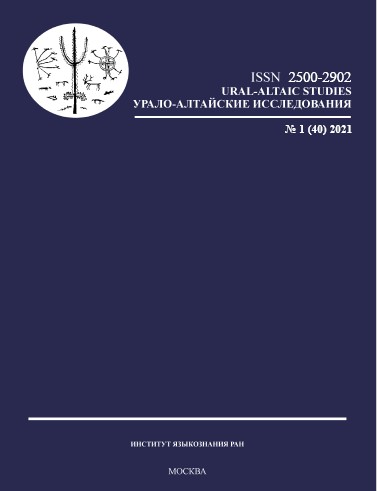Факторы, влияющие на проекцию пресуппозиций в чувашском языке: экспериментальное исследование
The factors influencing the projection of presuppositions in Chuvash: an experimental study
Author(s): Natalia A. Zevakhina, Daria V. Gornshteyn, Anastasia D. EgorovaSubject(s): Syntax, Comparative Linguistics, Philology
Published by: Институт языкознания Российской академии наук
Keywords: presupposition; presumption; projection; presupposition trigger; Standard Chuvash;
Summary/Abstract: The current paper experimentally studies the projection diversity of the following presupposition triggers in the Standard Chuvash language in assertive sentences, in negated assertive sentences and in conditional sentences: kallex ‘again’ (adverbial), ta ‘too’ (conjunction), mansa kaj ‘forget’ and pəl ‘know/find out’ (mental factive verbs), and pəter ‘finish’ (aspectual verb). Relying upon the presupposition projection in various contexts, [Abusch 2002] suggested to distinguish between hard vs. soft presupposition triggers. According to this view, the former two Chuvash items belong to hard triggers, whereas the latter three items represent soft triggers. The papers by [Xue and Onea 2012; Smith and Hall 2012] among others experimentally confirmed the distinction between hard vs. soft triggers in several West-European languages. The current paper verifies the hypothesis about the distinction between hard vs. soft triggers on the basis of a non-Indo-European language and suggests using a verification task: participants have to choose one of the values on the five-point Likert scale while answering a given question with respect to a given context. The paper only partially confirms the distinction between hard vs. soft triggers. As in [Xue and Onea 2012], the paper shows that soft triggers exhibit a more heterogeneous group than hard triggers. Moreover, contrary to the recent paper by [Tonhauser et al. 2018], the paper does not reveal further distinctions either within each of the presupposition trigger groups or between the presupposition trigger groups. The paper gives two plausible interrelated reasons for the obtained results that are a linear position and a syntactic status (independent vs. embedded) of the first clause in a question that contains the denied presupposition.
Journal: Урало-алтайские исследования
- Issue Year: 2021
- Issue No: 01 (40)
- Page Range: 7-30
- Page Count: 24
- Language: Russian

